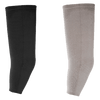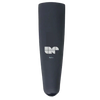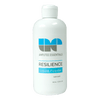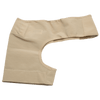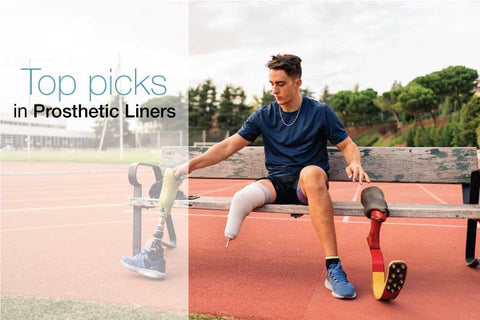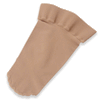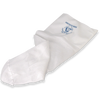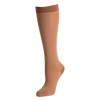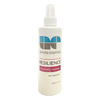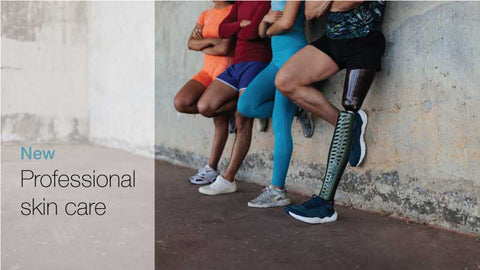What You Need to Know Before Tattooing Your Residual Limb
Reading Time: 5 minutes
_____
Summary:
-
Tattooing residual limbs inside prosthetic sockets poses unique risks
-
Friction, pressure, and moisture can disrupt healing and fade ink
-
Tattoos may trigger phantom sensations or skin breakdown in amputees
-
Amputees should inform their prosthetists of tattoo plans
-
Gradual prosthesis use and proper aftercare help minimize complications
_____
For many people, tattoos serve as a meaningful way to reclaim their identity, symbolize a transformation, or express their personality. However, for someone with limb loss considering tattooing the part of their residual limb inside a prosthetic socket, there are added risks and challenges. Tattooing in this close-contact area requires careful planning, collaboration with medical professionals, and a great deal of patience.

Unique Challenges in the Socket Interface Zone
Friction, pressure, and skin trauma
The skin that comes into contact with a prosthetic socket endures constant pressure, shear forces, and micro-movements. Fresh tattoos in this zone are especially vulnerable, as friction can damage scabs or affect pigment retention, and pressure may distort healing tissue. Even healed tattoos may fade or blur more quickly in stress-prone areas.
Risk of skin breakdown and ulceration
Residual limb skin is already prone to irritation, redness, blisters, and ulcers due to mechanical stress from the prosthetic. Adding a tattoo creates a deliberate wound that temporarily weakens the skin, increasing the likelihood of skin breakdown with ongoing stress.
Delayed or impaired healing
Tattooing induces micro-injuries. Typically, skin repairs itself through stages: inflammation, reepithelialization, and remodeling. So, continuous pressure from a socket may slow down or hinder healing, requiring adjustments or off-loading during the early healing phase.
Infection, allergic, and foreign-body reactions
Tattoo inks carry certain risks. Studies describe immediate, delayed, and long-term adverse effects, such as inflammation, allergic hypersensitivity, granulomas, and foreign body reactions.
Furthermore, infections can be concealed inside a prosthetic because skin moisture, friction, and liner materials may encourage microbial growth.
Altered Sensation and Phantom Phenomena
Many amputees experience residual limb areas with either reduced or altered sensation, along with phantom pain. Tattoos in socket-contact zones can suddenly trigger sensations such as pain, itching, or discomfort.
Additionally, pressure on these tattooed areas might worsen phantom limb pain or neuroma discomfort.
Changes in Volume and Fit
Residual limbs frequently undergo volume fluctuations due to swelling, muscle atrophy, or fluid shifts. Such changes can modify how pressure is distributed across the tattooed skin, potentially causing new stress points over time.
Moreover, slight variations in skin compliance caused by tattoo ink could subtly affect socket fit or liner comfort.
Tattoo Research Highlights
A review titled “Cutaneous Adverse Reactions Associated with Tattoos” explains that ongoing pigment deposition can lead to fibrosis, granulomas, and delayed hypersensitivity in tattooed skin.
Another recent review, “Tattooing: immediate and long-term adverse reactions and complications,” lists a broad range of tattoo-related issues, including skin infections, allergic responses, pigment migration, and keloids.
These risks could be even greater within the extreme microenvironment of a prosthetic socket.
Recommendations
If you decide to go ahead with a residual limb tattoo, keep the following recommendations in mind to minimize complications.
1. Wait until complete healing before regular prosthetic use
After tattooing, use an off-loading protocol. Allow the tattoo to heal (which can take longer than in other parts of the body) before reintroducing socket pressure.
Tattoos typically take 4-6 weeks to fully heal on any skin, during which time collagen remodeling and pigment stabilization occur. However, in high-stress areas, such as feet, palms, or socket-interfacing residual limb skin, healing is slower due to factors like sweat, friction, and occlusion.
2. Gradually reintroduce load
Initially, wear your prosthesis for short periods, then gradually increase the duration while carefully monitoring the tattooed skin for signs of redness, blistering, or irritation.
3. Cushion with liners/sleeves
Use soft liners, gel sleeves, or other cushioning materials to minimize direct shear or point pressure on the tattooed area. To reduce moisture in the area, use breathable prosthetic liners or prosthetic socks.
4. Collaborate closely with your prosthetist
Inform your prosthetist about your plan to get a tattoo in advance. They may modify your prosthetic socket design to improve pressure distribution or add padding to protect the tattooed skin.
5. Practice good hygiene, consistent skin care, and monitoring
It’s crucial to maintain cleanliness, control moisture, and inspect regularly for signs of infection or irritation. These habits can help you address issues early.
6. Choose an experienced tattoo artist
Preferably, one experienced with scarred, grafted, or altered skin, who can accurately adjust needle depth, ink saturation, and aftercare.
The bottom line
Getting a tattoo on the area of your residual limb that comes in contact with the prosthetic socket may be meaningful to you, but it’s important to be aware of the risks. With careful planning, proper healing procedures, and prosthetic adjustments (with the help of your prosthetist), you can get a tattoo on the area without damaging the skin or affecting prosthetic performance. However, the risk margin is smaller than with tattoos in other areas.
If you’re still interested in getting a tattoo in that area, it’s essential to be well-informed, prepared to handle potential complications, and work closely with a prosthetist and healthcare team.
Related reading:
Skin Conditions After Limb Loss: What You Need to Know
Is Shaving Worth the Risk? What to Know If You Wear A Prosthesis
How to Create A Prosthetic Skin Care Routine
Researchers Use Special Skin Cells to Change Prosthetic Users’ Skin Type

